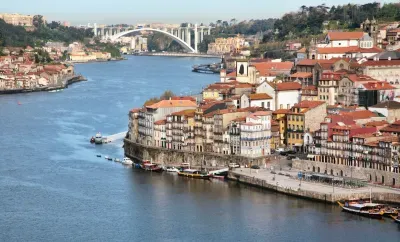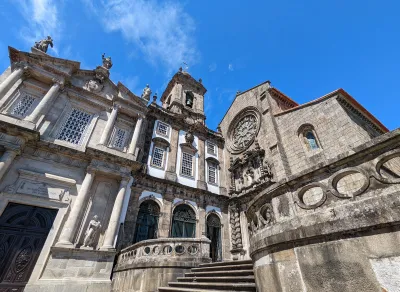
Church of St Francis
Situated only a short walk from the Ribeira and in Porto's historic centre this is by far the finest church. The Igreja de São Francisco (Church of St Francis) dates back to the 14th century when it was built as an enlargement to an existing church connected to the Franciscan convent. Constructed in the Gothic style the exterior is fairly modest compared to some of the Manueline excess of this period seen elsewhere. However, all this restraint is thrown to the wind when it comes to the interior.
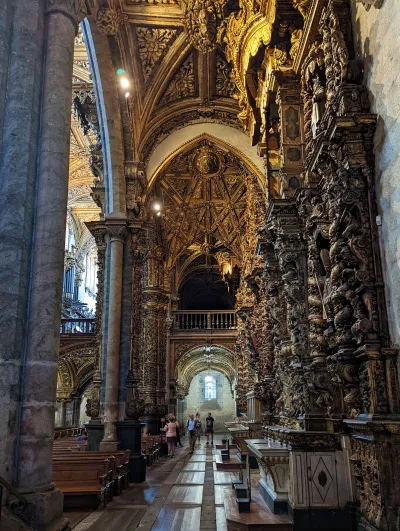
Remodelled during the 18th century in the Baroque style the interior of the Igreja de São Francisco is an almost overwhelming display of opulence. There is barely a patch of wall, ceiling or column that has not been adorned by intricately carved wood with a liberal coating of gold leaf. It is said that somewhere between 300 and 500 kg of Brazilian gold was used in covering the cherubs, saints and vines that adorn the church.
Upon entering the church it easy to be overwhelmed by the sheer amount of decoration on display. In fact it is almost impossible to take in the entirety of the display in just one visit, so it is better to just soak up the scale of the artwork and appreciate it as a whole before picking out some of the highlights.

Among the several chapels within the Igreja de São Francisco is the Chapel of St John the Baptist (Capela de São João Baptista) in the right transept. These chapels were built during the 15th and 16th centuries for wealthy Porto families who wanted a pantheon. The Chapel of St John the Baptist was built in the mid1530s for the Carneiro family and features ribbed vaulting in the Manueline style. What draws the eye in this chapel is the Baroque gold-gilded altarpiece - a later addition incorporating the original 16th century painting of the baptism of Christ.
Perhaps the most outstanding feature of the church's interior is the Tree of Jesse, a magnificent 18th century polychrome altarpiece. Inspired by bible teachings the elaborate carvings show Christ's descent from the twelve Kings of Judah in the form of a tree which sprouts from a recumbent Jesse of Bethlehem at the foot.
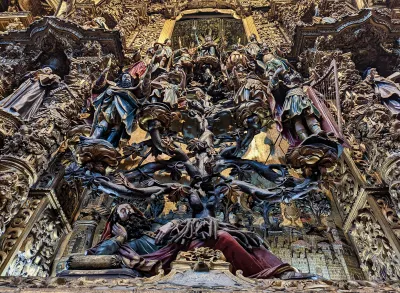
The church's exterior is altogether more restrained with the façade being its most interesting feature. A rose window dates back to the original Gothic styling while the main entrance has been given the Baroque treatment with its twisting solomonic columns topped with a statue of St Francis.
Next door to the main church are two other buildings. The first is the Baroque styled bell tower which is now incorporated into the Bolsa Palace and next to this is a further, smaller church (Igreja da Venerável Ordem Terceira de São Francisco) which is newer and distinctly Neoclassical in style.
Opposite the church entrance is the Dispatch House (Casa de Despachos) with its elegant Baroque interior. Within the house is a museum featuring sacred art along with artefacts from the religious order. The museum also tells of the Franciscan monks and offers a contrast of their austere lives with the ostentatious show of wealth by the donors to the Order.
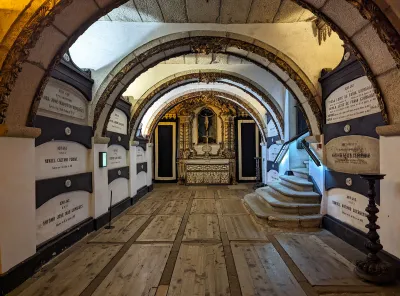
Perhaps the highlight of the Dispatch House are the macabre and fascinating catacombs which occupy the basement. Along with the well-ordered tombs of the great and the good of Porto you can see where the monks and mere mortals were laid to rest - a large pit of bones viewed through a grill in the floor.
Attraction type
